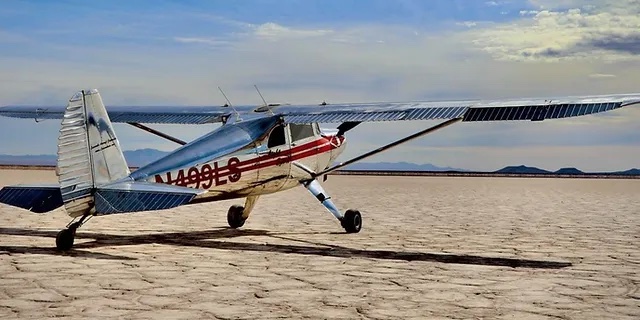
Luscombe Aircraft: Private Aviation Forever Changed
Meet the Luscombe Aircraft, a legendary series of light airplanes that forever changed the face of private aviation. Known for their efficient design, stellar performance, and ease of use, Luscombe planes have become an undeniable part of aviation history.
HISTORY: The Legacy of the Luscombe Aircraft
The Luscombe Aircraft Company, originally established in Kansas City, Missouri in 1933 by aviation enthusiast Don Luscombe, was moved to Trenton, New Jersey in 1934. Their initial aircraft, the Luscombe 50 (also known as Model 8), was introduced in 1938. Designed primarily for civilian use, these planes quickly gained popularity for their innovative construction and affordability.
A crucial milestone in the history of Luscombe Aircraft was during World War II when the company manufactured the Model 8A as military observation and liaison aircraft, thus, contributing significantly to the war efforts.
DESIGN: Built for Performance and Efficiency
The Luscombe 8 was a two-seat, high-wing, monoplane crafted with an all-aluminum fuselage – a novel concept for its time. With a wingspan of 35 feet and a length of just over 20 feet, the Luscombe aircraft could comfortably accommodate two individuals. Despite its compact size, it never compromised on its performance.
PERFORMANCE: Soaring Above the Rest
With a top speed of 120 mph, and a cruising speed of 105 mph, the Luscombe 8A boasted of performance characteristics usually found in larger aircraft. The range of 450 miles and a service ceiling of 16,000 feet, made it an extremely versatile light aircraft during its era.
TECHNOLOGY: Innovating with the Times
What set Luscombe aircraft apart was their innovative use of technologies. While most planes of the era were constructed using wood and fabric, Luscombe introduced the use of aluminum in the aircraft's construction. The integration of advanced avionics, efficient propulsion systems, and robust safety measures further distinguished the Luscombe aircraft in the industry.
VARIANTS: Models for All Missions
The Luscombe Aircraft offered several variants, each designed with specific uses in mind. For instance, the Luscombe 8A was a standard model used for civilian flight. Meanwhile, the 8E model was powered by a more powerful engine and was often used for more demanding aviation activities.
OPERATORS: From Civilians to Military Organizations
Luscombe aircraft are operated by a range of entities. Many of these planes still find use in private aviation and flight training. During WWII, the military versions of the Luscombe 8, like the Luscombe 8A, were used by the U.S. Army and Navy for observation and liaison roles.
In conclusion, the Luscombe Aircraft's influence on the aviation industry is undeniable. From the innovative use of materials to their efficient design and stellar performance, these planes have carved out a unique place in aviation history. So the next time you spot a Luscombe in the sky, remember the history and innovation that it carries in its wings!
SPECIFICATIONS: The Luscombe 8A At a Glance
| Parameter | Specification |
|---|---|
| Length | 20 ft 4 in |
| Wingspan | 35 ft |
| Height | 5 ft 10 in |
| Maximum speed | 120 mph |
| Cruising speed | 105 mph |
| Range | 450 mi |
| Service ceiling | 16,000 ft |
| Seats | 2 |
| Empty weight | 860 lb |
| Gross weight | 1,400 lb |
| Powerplant | 1 × Continental A65-8 four-cylinder, horizontally-opposed piston engine, 65 hp |
Share this post with other aviation enthusiasts and let them discover the legendary Luscombe Aircraft!
This article uses material from various web resources and Wikipedia article, released under the Creative Commons Attribution-Share-Alike License 3.0.

